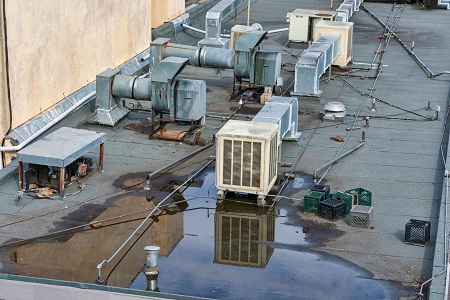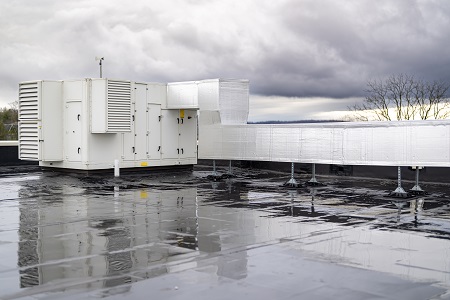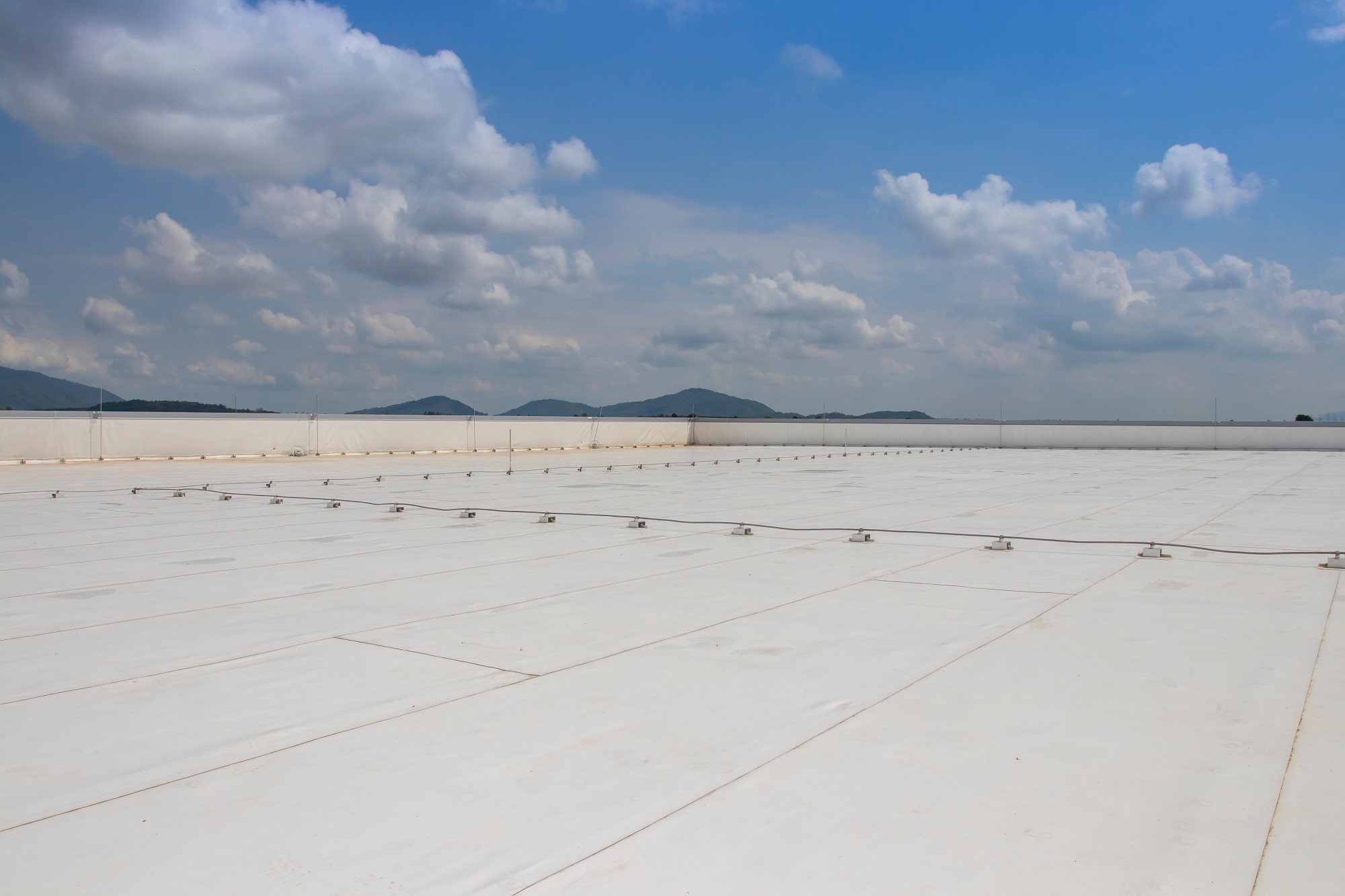As a business owner, you’re responsible for keeping your establishment up and running. A key part of this involves ensuring the integrity of your commercial roof. But let’s face it, even the best roofs can encounter issues over time – from leaks and ponding water to weather damage or sagging surfaces. Moreover, a lack of regular maintenance can lead to serious problems that require immediate attention.
It’s crucial that you understand what these different types of commercial roof repair entail so you’re prepared for any situation that may arise. This article will guide you through seven common roofing issues and share insights on how to address them effectively. By learning more about different roofing materials and techniques used in repairs, you’ll be better equipped to make informed decisions when it comes to safeguarding your property and investment.
Roof Leaks
It’s pretty alarming when you spot a leak in your commercial roof, isn’t it? But don’t worry; understanding the root cause can save you from serious damage and unnecessary costs.
Leaks typically occur due to several reasons – faulty flashing installation, roof punctures from foot traffic, or even aging materials. If not addressed promptly, these leaks can lead to mold growth and structural damage.
For flat roofs made of EPDM or TPO, professionals usually patch up the area with a similar material. For metal roofs, they may use sealants or replace damaged panels entirely.
Remember: each type has its unique repair method. So make sure you hire an expert who’s familiar with commercial roofing materials and techniques for the best results!
Ponding Water on Flat Roofs

When heavy rainstorms pass, you’ll often find pesky pools of water stubbornly squatting on flat rooftops, an issue known as ponding.
Ponding is a common problem for commercial buildings with flat or low-sloped roofs, and it can lead to significant damage if left unchecked. The weight of standing water can strain the roof’s structure, eventually causing sagging or even collapse. Moreover, stagnant water is a breeding ground for algae and mold, eroding roofing materials over time.
To combat this issue, consider installing tapered insulation systems that encourage proper drainage. Alternatively, roof crickets or saddles are effective solutions to direct the water towards drains.
Remember, regular inspections and maintenance are crucial in preventing substantial repairs down the line; don’t let your building’s rooftop become a makeshift pond!
Sagging or Uneven Roof Surface
Don’t ignore that dip or sag on your building’s roof surface – it might be more than just an aesthetic issue. It could indicate a structural problem, such as weakened support beams or inadequate roofing materials. Over time, this sagging can lead to serious damage if not addressed promptly.
The first step is identifying the underlying cause. If the roof supports are failing, you’ll need professional intervention immediately. On the other hand, if your roofing material isn’t holding up to weather and wear, replacing it with something more durable may solve the problem.
Regardless of the cause, don’t wait until leaks start or worse – a total collapse occurs. Act swiftly and contact a roofing specialist who understands commercial structures and can provide an effective repair solution tailored to your needs.
Blistering
Have you ever noticed those bubble-like formations on your building’s rooftop? That’s known as blistering, and it’s a problem you can’t afford to ignore.
Blistering indicates that air or moisture is trapped between the layers of your roofing material. This issue is common in commercial roofs made of asphalt or other multi-layer materials.
Here are four key points about blistering you should know:
- It often appears after extreme temperature fluctuations.
- If ignored, blisters can lead to severe leaks and structural damage.
- Regular roof inspections will help identify early signs of blistering.
- Professional intervention is necessary for proper commercial roofing repair, including cutting out the affected area and replacing it with new material.
Blistering might seem minor, but addressing it promptly ensures your building remains structurally safe and sound.
Weather Damage
Just like your skin, your building’s exterior can suffer from harsh weather conditions – it’s not just about the aesthetics but also about protecting what’s inside.
Harsh weather elements such as heavy rain, snow, hail, or high winds can cause significant roof damage to commercial roofs. Tiny cracks may appear due to constant exposure to UV rays and temperature fluctuations, causing a leaky roof during a downpour. Hailstorms are notorious for damaging roofing materials, while high winds can tear off entire sections of the roof.
You’ll need professionals who know how to handle different types of roofing materials and have experience with all types of repairs. They’ll assess the damage, recommend solutions best suited for your roof type, and execute them efficiently for long-lasting protection.
Damaged Flashing
When it’s been through a lot, your building’s flashing could show signs of damage, potentially leading to serious issues down the line. Flashing is a critical component of your roof system as it assists in waterproofing and directing water flow away from vulnerable areas like vents or chimneys.
If your flashing is damaged or misplaced due to harsh weather conditions or poor installation, water can infiltrate these vulnerable spots, causing leaks, mold growth, and structural damage. Materials for commercial roofing flashings vary from metal—like copper, aluminum, or steel—to rubber or plastic. Whatever material you choose should be durable and resistant enough to withstand extreme temperatures and heavy rainfalls.
Don’t ignore damaged flashing; timely repairs are crucial for maintaining the integrity of your commercial roof.
Not Keeping Up on Maintenance
While it’s crucial to address damaged flashing promptly, don’t overlook the importance of regular roof maintenance. If you’re not keeping up with routine care, you run the risk of severe damage that could have been prevented easily.
Here are some key points:
- Regular Inspections: Having your roof inspected by a professional every six months can spot potential issues before they become significant problems. This includes checking for signs of water damage like mold or rotting wood and ensuring drainpipes are clear and functioning properly.
- Preventative Maintenance: This involves cleaning your gutters regularly to prevent water from pooling and backing up onto your roof. Sealing any small cracks or holes immediately can save you from expensive repairs down the line.
North American Roofing Specializes in Commercial Roof Repair

Welcome to North American Roofing! With our 43 years of combined experience, we take great pride in being a top-notch commercial roofing contractor. Our mission? To become the go-to roofing company for business owners across the United States, both locally and nationwide. When it comes to professional roof inspections, look no further – just give us a call. Our expert team will conduct a thorough roofing survey, complete with a detailed photo report that analyzes the current condition of your roof. From there, we’ll work with you to find a roofing solution that not only fits your budget but also takes into consideration your energy efficiency concerns and business priorities. Count on us to provide superior customer service and exceptional roofing services. We’ve got you covered!
Contact us today to schedule a commercial roof inspection or for repairs.
Other commercial roofing services we provide:
- Complete Roof Replacements
- Flat Roof Repair
- Commercial Roof Installation
- Commercial Roof Repairs and Inspections
- Commercial Roof Maintenance
- And More
Visit our About Us page for more information about our commercial roofing company.

